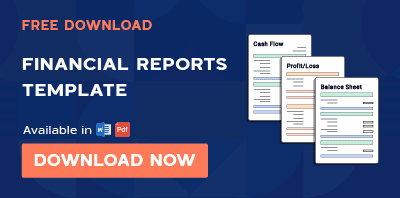You wouldn’t believe how many PPP applications get rejected over basic mistakes.
But after going through enough rejected applications, one thing is obvious: most of them could’ve been approved.
The issues are almost always fixable. A number that didn’t match. A missing payroll document. Ownership percentages that didn’t total 100%.
What you need to do for PPP loan approval isn’t hard. But it does take precision, and most people don’t realize that until they’re already denied.
Avoid that. Start earlier. Check tighter.
Prepping for approval
Most PPP loan applications aren’t denied because of paperwork. They get denied earlier, during eligibility checks, and most founders don’t even realize they’ve failed.
If your business wasn’t operating by February 15, 2020, your application isn’t eligible.
That is a hard cutoff. Missing it meant the system rejected your file automatically, no matter how strong the rest of it looks
You also need to show clear payroll activity. That means proof of actual payments to employees or 1099 contractors, not projected payroll or planned hires.
Second, draw applications came with more scrutiny.
To qualify, businesses have to show they used their first PPP loan correctly and experienced a 25% drop in revenue in at least one quarter compared to the previous year. That comparison has to be documented clearly through financial records.
This part of the process is built to screen applications quickly. And that same mindset still applies to SBA loans and similar programs today.
Before you apply for anything, make sure you meet the demanding criteria. Otherwise, nothing else moves forward.
The part that gets you denied: Your documents
Once eligibility is locked in, lenders go straight to your documents. And if those don’t check out, everything else stops. It’s about precision.
The form you fill out needs to match your support documents line by line. If your Schedule C says $88,000 in gross receipts but your payroll summary says $92,000, that small mismatch can stall the entire process. Lenders don’t chase you down. They move to the next file.
If you’re self-employed with no employees, you’ll need a recent Schedule C from IRS Form 1040 and often bank statements to show active income.
If you have employees, lenders expect your Form 940 or Form 941, plus detailed payroll reports. Corporations and partnerships should also include wage filings, proof of ownership, and business registration docs, not just summaries.
For the second draw, it’s more intense.
You’ll need payment history from the first loan, plus proof that your revenue dropped 25% or more in one quarter. This could be a profit and loss statement or part of your 2020 tax return.
Before submitting, check that your documents can clearly answer two things:
How much are you eligible for? It depends on your payroll. For most, the PPP amount is 2.5x your average monthly payroll (from the year before the loan). If you’re self-employed, it’s based on net profit from Schedule C.
How do you calculate the amount that can be forgiven? To get the full amount forgiven, at least 75% must be used for payroll, and the rest must be used for approved expenses like rent or utilities. You’ll need to show clear use of funds and matching documentation when applying for forgiveness.
If your application doesn’t make those answers obvious, it’s not ready.
Filling out the actual form
The PPP form isn’t long. But the moment your answers don’t line up with your documents, you’ve lost your shot. Lenders aren’t there to clean up the gaps.
Sometimes, numbers don’t match. Your application form and supporting documents need to be agreed upon down to the last digit. If they don’t, the assumption isn’t that you made a typo. It’s that the file is unreliable.
Another time, you put the NAICS code wrong. This code defines your industry. Use the wrong one, and you might land in a category that’s ineligible or flagged. Use this NAICS search tool to be sure.
Business name mismatch might be there. This one’s overlooked often. Your entity name has to match your registration. If it says “ABC Ventures LLC” in one place and just “ABC Ventures” in another, that inconsistency can trip a rejection.
This is why I keep saying that your file needs to speak for itself. No back and forth.
If you’re not sure where things might fall apart, use SBA lending assistance from Upmetrics. It helps you prep every form, line up the correct financials, and make sure nothing contradicts itself. You’re not just filling out a form. You’re making a case for why your business deserves funding. Get it right the first time.
What happens after you hit “submit”? It’s not instant, and it’s not over.
Once you hit submit, your application goes to the lender for review. They’ll look at what you entered in the form and compare it against the documents you uploaded.
If something doesn’t line up, they don’t pause and ask you to clarify. They either send a generic follow-up through the portal or stop processing your file.
This part is tricky because most follow-up communication happens inside the lender portal. If you’re not logging in regularly, you might not even realize they asked for something. And if you miss the response window, your application gets auto-rejected.
If everything checks out, the lender sends your file to the SBA. That process can take anywhere from a few days to a few weeks, depending on volume. And during that stretch, silence is normal. You’re not necessarily denied. It’s just how slow the system moves.
So, no, hitting submit doesn’t mean you’re done. It just means it’s time to check the portal, stay alert, and be ready to respond fast if they ask for anything.
One solid application is better than five rushed ones.
Most people underestimate how much time they’ll waste fixing a sloppy application or, worse, re-applying from scratch after getting denied.
But it doesn’t have to go that way.
If you slow down just enough to check your eligibility, prep your paperwork correctly, and double-check the form before submitting, you give your application a real chance.
And if your financials are all over the place, don’t guess your way through it. Use a tool like Upmetrics to build a lender-ready business plan, structure your cash flow breakdowns, and keep everything consistent. It saves time now and makes approval more likely later.
The Quickest Way to turn a Business Idea into a Business Plan
Fill-in-the-blanks and automatic financials make it easy.


